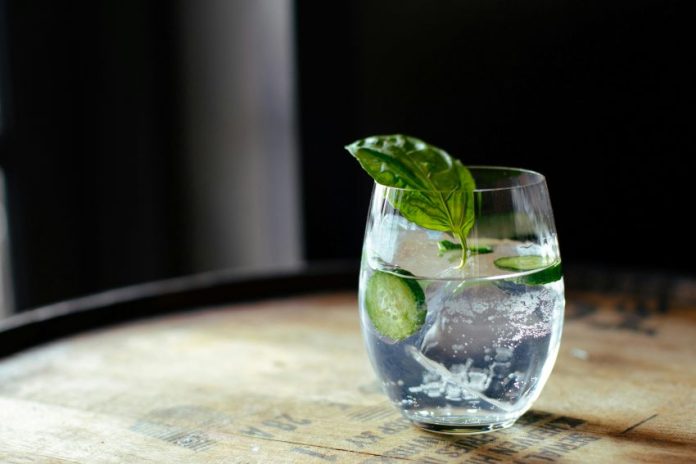Gin, the core of James Bond’s precious martinis, may have its roots firmly planted in British tradition. Yet, Mexico, with all its sun-soaked vibrancy and unapologetic boldness, has been carving a niche in the global gin scene by crafting audacious spirits that could leave even 007 himself both shaken and stirred.
In recent years, Mexican artisanal gin (or ginebra, as it’s known here) production has flourished with surprising vibrancy and innovation. While Mexico has long been celebrated for its tequila and mezcal, the emergence of artisanal gin distilleries has introduced an exciting new dimension to the country’s spirits landscape. The production of small batches using artisanal methods enables distillers to devote attention to detail, employ more traditional techniques and engage in experimentation. This gin-making process has been marked by fascinating creativity, as distillers draw inspiration from Mexico’s rich biodiversity and cultural heritage to craft distinct and unique flavors.

What can you expect from a Mexican ginebra?
The Official Mexican Standard NOM-199-SCFI-2017 for alcoholic beverages lays down the law, specifying that ginebras are alcoholic beverages primarily defined by their juniper flavor and aroma. Crafted through the distillation of fermented malted grain, followed by the redistillation of neutral spirits or high-quality ethyl alcohol in the presence of juniper berries and an array of aromatic seeds, barks, and roots, this process yields a spirit with an alcohol by volume (ABV) ranging from 35% to 55%.
Mexican distilleries adhere to this description and use the remaining leeway to unleash their creativity. Honoring the nation’s biodiversity, Mexican gins incorporate regional herbs, spices and fruits. Some gin maestros take the sensory journey to unusual heights by weaving in aguamiel, achiote, hibiscus flowers, cacao, coffee, chiles, cenote water and other local (and surprising) twists.
Five Mexican ginebras that fuse old-world sophistication and new-world adventure:
1. EV Ginebra Seca Mexicana. 50% ABV. Made in Zapopan, Jalisco. This pioneering brand developed the Mexican Dry Gin style and won the Gold Medal in the Gin Category at the 2021 San Francisco World Spirits Competition. The recipe includes 43 ingredients that provide floral, citrus, and herbal nuances, underpinned by a robust and spicy backdrop. Its impressive array of botanicals includes oregano, pepper, cardamom, rose, jasmine blossoms, lemon balm, bitter orange peel, and the vibrant notes of lemon and grapefruit.
2. Condesa Gin Clásica. 43% ABV. This gin is created and distilled by a female-led team in Mexico City. In addition to coriander seeds, elderflower, lavender, rosemary, lemon and orange peel as the base notes. Inspired by healing rituals, it notably incorporates palo santo and sage to provide earthy and meditative qualities with exotic high tones. This distillery’s motto is: “Herbs to cleanse negative energy. Flowers to attract love. Resins to expand consciousness.”

3. Gin Katún. 42% ABV. In the style of London Dry Gin, this gin is handcrafted in Yucatán with 17 ingredients designed to mirror the vibrant ambiance of Mérida’s central market. Its botanicals include chile habanero, vanilla, spices, aromatic flowers, and a medley of citrus, cardamom, achiote, sage and tropical fruits. Crafted from neutral corn alcohol, its distillation process blends in cenote water before filtering and bottling.
4. Gin Perro Desterrado. 43% ABV. Winner of the Double Gold Medal for Best Spirit at the 2021 Wine & Spirits World Trophy Awards. The artisanal production of this gin in Jalpa, Jalisco is known for incorporating three ancestral botanicals: cempasuchitl flower, hierba santa and avocado leaf. The name refers to those who must migrate in search of a better life but keep a strong emotional bond with their homeland. This distillery was born with a mission to stimulate the local economy and prevent the displacement of its people.
5. Ginebra Armónico. 50% ABV. This dry gin is made in San Juan del Río, Querétaro, with a harmonious blend of 32 botanicals, based on the traditional flavors in London gin plus predominantly citrus and floral ingredients endemic to Mexico, including the exotic allure of jasmine, the comforting warmth of cinnamon, and the mystical touch of damiana.
How to choose?
Remember, gin isn’t meant to be a solo artist but part of a band. Gin shines best in cocktails, so consider your flavor preferences and the mixing ingredients that you choose. If the captivating flavors and aromas found in Mexican ginebras make it hard to choose just one, maybe you can try them all!
Sandra is a Mexican writer and translator based in San Miguel de Allende who specializes in mental health and humanitarian aid. She believes in the power of language to foster compassion and understanding across cultures. She can be reached at: [email protected]
